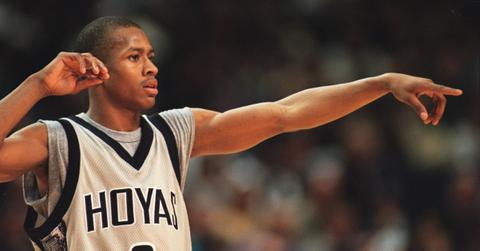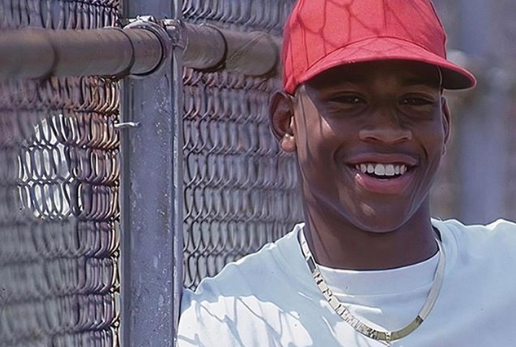Had It Not Been for National Attention, Allen Iverson Could've Stayed in Prison
Updated Aug. 31 2020, 2:03 p.m. ET

A brawl that occurred on Feb. 14, 1993, at the Circle Lanes bowling facility in Hampton, Va., nearly ended Allen Iverson's rising basketball career. This fight was reportedly between a group of "Blacks and whites," according to a Daily Press article. Iverson, an 18-year-old basketball star who was headed to Georgetown University and considered the best athlete in America at the time, was enjoying himself with a group of friends.
What exactly happened to Allen Iverson when he was in high school?
He and his group were reportedly being rowdy, with Iverson continuing to bowl even after his lane was shut off and being asked to stop doing so by employees. Despite the disturbance, workers reported that everyone was seemingly having a good time and there were no warning signs of the eventual drama and violence that would unfold. Video of the event would yield a blurry melee of people screaming and crying, chairs being thrown, and shots trading between throngs of people.

Iverson and three of his Black friends would be charged with inciting "mob violence" against a group of white bowlers. The two men's testimonies that received the most attention were Allen Iverson's and Steve Forrest. Forrest claims he was jumped by one of Iverson's friends when he was just minding his own business until the basketball player and his friends walked down 10 lanes to the area where he and his pals were getting ready to leave.
Forrest's version of the events were contested by Iverson, who claims he was walking to the snack bar before a white man, Forrest, called him a "little boy" and an "n-word."
Iverson said, "He was in my face, like almost touching. I told him he wasn't going to do nothing to me."
Iverson then says the man took a chair to hit Iverson on the head and then someone grabbed him and took him outside to get him away from the violence.
Forrest contended Iverson's reporting of the events and maintained he didn't use a racial slur or try to incite any violence. An employee who witnessed the event said she didn't see who threw the first punch, but did see a member of Iverson's group run back to the other side of the bowling alley to enlist the help of some friends to return to the other side of the alley where Forrest and his crew were and that's when the melee escalated.
So what was the culmination of Allen Iverson's high school incident?
In a nationally publicized case that touched upon delicate issues of racial tension and the most anticipated athlete in basketball, Iverson ended up being sentenced to three to five years in prison, but had two of the counts he was charged with suspended, meaning he would only have to serve 10 months of that time. He previously was charged with 15 years, which caused quite a bit of controversy as no one was seriously injured in the incident and the fight was, by all accounts, racial in nature.
Iverson's case divided white and Black communities.
He ultimately only served four months in prison and even had his conviction overturned due to "insufficient evidence." Director Steve James, who is also from Hampton and made the film Hoop Dreams, said of Iverson:
"He was hugely popular. But along with that, there was this undercurrent that Allen Iverson was an arrogant athlete. ... Many people — mostly in the white community, but not exclusively — felt, 'You see, this is the kind of kid this guy is.'"
There was a lot of talk surrounding Iverson's case of an animosity many whites felt towards the young Black athletic prodigy who made a name for himself on the court.
James continued, "Whereas many of the people in the Black community, but not exclusively, felt that they were trying to make an example of this kid."
James would go on to make the 2010 documentary about Allen Iverson, which didn't have the player's direct involvement, called No Crossover in 2010 which would detail Iverson's upbringing in Hampton, his growth into a bonafide basketball star, and the Valentine's Day brawl that nearly dashed his hopes of joining the NBA, had his 15-year conviction stuck.